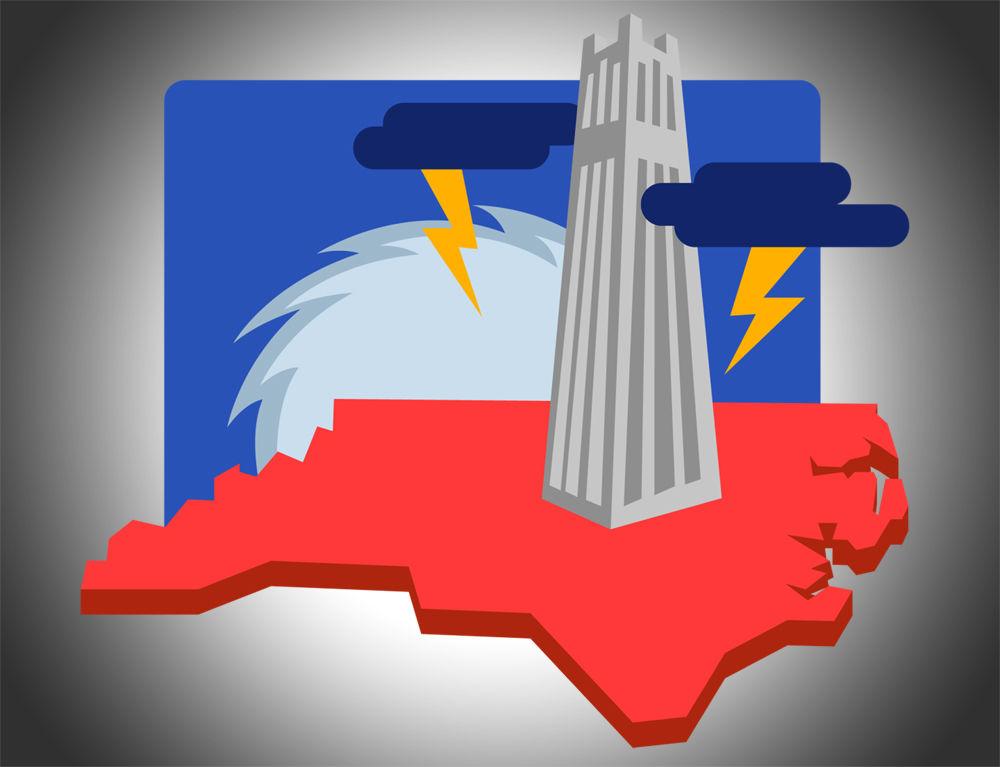While NC State only experienced minor damages during Hurricane Florence last weekend, campus departments worked together to prepare for the worst.
On Sept. 14, Hurricane Florence made landfall as a Category 1 hurricane and caused major damage in eastern North Carolina. When the state began making preparations early last week, NC State also began to prepare campus for the worst-case scenario.
Todd Becker, the emergency manager with Emergency Management and Mission Continuity (EMMC), said that EMMC acted as the point place for other campus departments to handle different situations that could have become problems during the hurricane.
EMMC plugged into several different campus partners and those partners worked on getting pertinent information to students through avenues such as the Division of Academic and Student Affairs (DASA).
“Our group was, think of it as the hub for a lot of the planning efforts so that it was consolidated instead of having different groups acting independent of each other,” Becker said. “The No. 1 priority when it comes to these types of situations is Life Safety and safety of the campus community: students, faculty and staff.”
According to Becker, the EMMC as well as facilities, DASA and Dining were working during the hurricane preparing for cases such as fire alarm failures or low supplies in Dining Halls.
“We worked a lot with facilities as well in terms of shoring up facilities and preparing facilities across campus prior to the storm and then worked with them during the storm and after the storm to identify problem areas on campus resulting from any physical damage from the storm as well,” Becker said.
Damage to NC State’s campus was minimal with only minor roof leaks and fallen tree branches that NC State Facilities handled. During the storm itself, Centennial Campus along with surrounding parts of campus such as Wolf Village lost power.
“I believe Centennial lost [power] for just a few hours, maybe two hours; it wasn’t long,” Becker said. “There were some utility issues, not related to any campus infrastructure but for Duke Energy. Our facilities responded very quickly to that, as did Duke very quickly in that area.”
The intersection between Cates Avenue and Morrill Drive was also closed due to a water line break that occurred during, but was not caused by the storm.
EMMC routinely goes through after-action activities after events like these or exercises that are hosted on campus to assess how well campus partners dealt with the event.
“We’re in the middle of doing that right now, which is talking to different groups who were impacted by the storm, different stakeholders that we engaged during the storm to kind of get a lessons learned – what worked best, what didn’t work, what do we need to improve,” Becker said.








